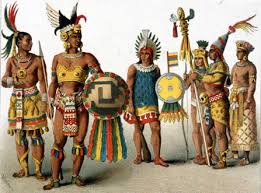To what extent should contemporary society respond to the legacies of historical globalization? Part B
To what extent should contemporary society respond to the legacies of historical globalization?
Evidence of Injustice
What are the continued impacts of historical globalization on Indigenous peoples?
What evidence of injustices can you identify?
First contacts between Indigenous and non-Indigenous peoples brought about trade relationships and cultural interaction. The immediate impacts of these meetings were the technological and cultural exchanges between both groups. Many of these exchanges were co-operative and mutually beneficial, as witnessed by the fur trade relationships between the French and First Nations in New France. In others they resulted in turmoil, such as the Spanish encounter with the Aztecs that resulted in conflict and disease.

By the nineteenth century, the benefits of globalization began to weigh more in favour of Europeans than Aboriginal peoples. Many individuals believe Indigenous or Aboriginal peoples are the most challenged by the impacts of globalization to their ways of life, identity, and citizenship.
In this section, you will examine and assess how historical globalization continues to impact Indigenous peoples. Throughout the module you will see references to Aboriginal peoples in a North American context and Indigenous peoples in a global context.
Injustice can be unfair treatment, a violation of rights, or a hurt or wrong against individuals or groups. Globally, there were many historical incidents when the imperialistic practice of the domination of one group over another resulted in injustice. The rule by the Roman Empire, the expansion of the Mongol Empire, and the conflicts between Christians and Muslims during the Crusades are some examples.
Acts of injustice may not always be deliberate on the part of one group, but the resulting treatment or violation can have deep impacts for the receiving group. In the 1950s the Canadian government carried out a program to educate Inuit children in Canada to facilitate their transition into Canadian society. At the time it was generally accepted by the government and many non-Aboriginal Canadians that assimilation was the best solution to the transition.
Multimedia
Go to the CBC Archives website and search for the topic “An Inuit Education: Honouring a Past, Creating a Future.” View the video clip To educate or not to educate? (January 20, 1957). Analyze the assimilation strategy for Inuit children and identify evidence of injustices to complete your chart.
You may also be interested in watching Finding a balance on Baffin Island (November 24, 1987).
Reflection
In the circumstances you explored, how can the implementation of an education system result in injustice?
Assignment
Complete the Evidence of Injustices Assignment at this point.